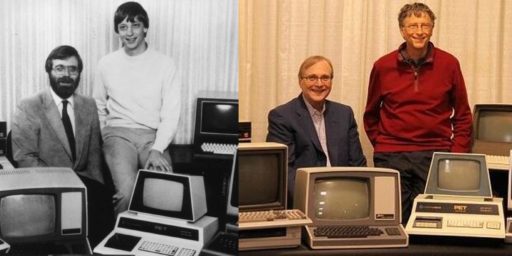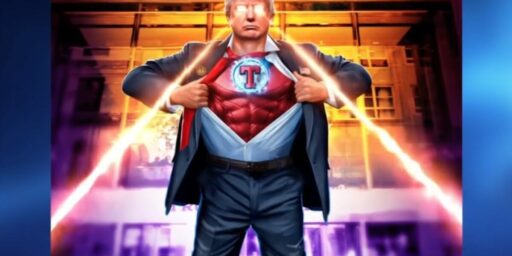Computer-Generated Catastrophe?
In an op-ed in the New York Times this morning, Richard Dooling discusses the role of computer models in the ongoing financial crisis:
The Wall Street geeks, the quantitative analysts (“quants”) and masters of “algo trading” probably felt the same irresistible lure of “illimitable power” when they discovered “evolutionary algorithms” that allowed them to create vast empires of wealth by deriving the dependence structures of portfolio credit derivatives.
What does that mean? You’ll never know. Over and over again, financial experts and wonkish talking heads endeavor to explain these mysterious, “toxic” financial instruments to us lay folk. Over and over, they ignobly fail, because we all know that no one understands credit default obligations and derivatives, except perhaps Mr. Buffett and the computers who created them.
Somehow the genius quants — the best and brightest geeks Wall Street firms could buy — fed $1 trillion in subprime mortgage debt into their supercomputers, added some derivatives, massaged the arrangements with computer algorithms and — poof! — created $62 trillion in imaginary wealth. It’s not much of a stretch to imagine that all of that imaginary wealth is locked up somewhere inside the computers, and that we humans, led by the silverback males of the financial world, Ben Bernanke and Henry Paulson, are frantically beseeching the monolith for answers. Or maybe we are lost in space, with Dave the astronaut pleading, “Open the bank vault doors, Hal.”
Hat tip: Glenn Reynolds
Mr. Dooling is just two weeks behind me:
My final thought in this post is that I’ve heard it said that with the aid of a computer in a fraction of a second you can make an error that it would have taken you years to produce by hand and I can’t help but wonder if that isn’t the case with the financial crisis. For one thing I can see how the online trading systems might have put stress on the traditional investment banks’ business model. In response to that they adopted the complicated derivatives and mortgage-backed securities that have accounted for so much of their revenues lately. Were these things being computer-constructed? I suspect they were and that could possibly explain the rapidity of the collapse. I’m thinking of some sort of demonic philosopher’s dinner in which not only were the positive feedbacks of greed and rising real estate prices driving the system but there was an ever-increasing computer-assisted tempo which accelerated the collapse.






Market Segfault? Kernel (of investors) Panic? Yeah, it does kind of look like that.
Berneke: “Your industry has performed an illegal operation and will be terminated”.
The puns, they write themselves…
Just look at the human frenzy generated in the pit when a commodity is flying and you’ll see that human interation excellerates the activity of buying and selling -not so sure about the computer as a causal factor. The real problem is the herd instinct -the last trader out or in is the loser – making everyone a hero or an idiot!
Add to that the boozing during the day on Wall Street and you have the makings of a quick disaster.
Yeah, a credit default swap is a bad trap…